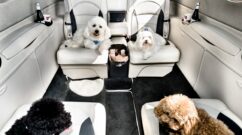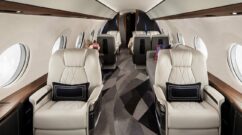At the origins of aviation, where it all began, the engineers of the time were inspired by the sky and its fauna: birds and flying animals. And one thing leading to another, the names of both flying and land and sea animals have remained. Thus, not only airliners but also private jets and many helicopters are named or nicknamed after animals.
AEROAFFAIRES explains the origins and place of animals in the world of aviation and business aviation.
Birds and flying animals at the origin of aviation
What is biomimicry, at the origin of aeronautics?
Did you know? One of the first aircraft prototypes was created in the form of a bat? Scientifically, the inspiration that people have by observing nature and animals for the creation of their flying machines is called “biomimicry“. Biomimicry is the very foundation of all aeronautical devices. Today, biomimicry is still relevant. Indeed, the possibilities are endless for aircraft manufacturers who are interested in nature as a source of inspiration for their aircraft. Indeed, the noiseless flight of the owl or the “V” formation of migratory birds are still being studied for future air projects.
Moreover, it is thanks to this biomimicry that aircraft manufacturers have created winglets at the end of aircraft wings. The slightly raised wing tip is inspired by the vulture and also the crane. These large birds fly over long distances and inspired these aeronautical innovations. In relation to aircraft, this innovation allows aircraft to reduce the impact of turbulence, and by extension, limit fuel consumption.
The flight of birds and insects has always preoccupied me… I had tried all kinds of bird, bat and insect wings, arranged as flapping wings, or fixed wings with a propeller.
French engineer Clément Ader, one of the forerunners of aviation, said in 1893.
Private jets and aircraft derived from birds
The engineer C. Ader, wishing at all costs to make man fly in the air, created several prototypes of flying machines. He was inspired in particular by bats and the structure of their wings. The concept was not to reconstitute and reproduce the movement of the wings of birds and flying animals, but to be inspired by the structure of the wings. Having fixed wings allows to control the flight behaviour. It is therefore the observation of wings that allowed the realization of the wings of future aircrafts in particular.

Also, from the 1900s onwards, another prototype flying machine found its inspiration in pigeons! This was the observation made by the Wright brothers, engineers and inventors, when they created their various gliders.
Nowadays, this habit of looking into the sky to study birds when creating a flying machine is still relevant today. Indeed, Airbus was inspired by the albatross! This bird is very interesting and a source of inspiration for the aircraft manufacturer because it is able to fly over long distances, several hundred kilometres, without flapping its wings! (According to Actu.fr). Airbus engineers then studied the flight behaviour of the Albatross and came to the following conclusion for their aircraft model: “The AlbatrossOne has its wings clamped on its shoulders for long distances, but unlocks in the event of gusts of wind or manoeuvres”. So says Airbus AlbatrossOne engineer Tom Wilson. This evolution allows the aircraft to be lighter but above all more fuel efficient. After the flight tests of this new type of wing, Airbus could install the same type of wing on other aircraft such as the A321.

Finally, another aircraft manufacturer has taken inspiration from birds and flying animals for its private jets. This is notably Dassault Aviation, with its Falcon family of business jets, meaning falcon in French. When the very first private jet in this family, called Mystery 20, was created, Pan American was very interested in these aircraft models. One of the technical advisors who observed them even before the first flight is reported to have said: “I’ve found our bird”. This was the reason for the name, as the family of business jets was subsequently named Falcon.
To complete the picture, you should know that in civil and military aviation, other aircraft have taken the name of birds. These include the Focke-Wulf Condor, Dassault Aviation’s Milan, Sud-Ouest’s Vautour, British Aerospace’s Hawk, Cessna’s Dragonfly and many more. (From an article on avionlegendaire.net).
Other animals naming private jets, helicopters and planes
It is not only birds that have inspired the aviation world. Indeed, many land and sea animals have lent their names to various business jets, helicopters and aeroplanes.
For example, the Beluga, before being one of the most famous cargo planes, is first and foremost an animal species. This marine mammal was the inspiration for the structure of the Airbus Beluga aircraft, recognisable by its characteristic hump and impressive size. Also from Airbus, we find the Super Guppy, also named after a marine animal, this time a small fish.


Finally, many aircrafts are also named after animals, as is the case with the best-known helicopters of the manufacturer Aerospatiale, such as the Ecureuil AS 350 (squirrel), the Dauphin AS 365 (dolphin), or the Cougar AS 332.
In addition, many helicopters are named after animals. However, these names can vary depending on the use of the helicopter. For example, the same AS 332 aircraft nicknamed Cougar in civil aviation will be called Super Puma in military aviation. Other names for military helicopters are the gazelle, the wasp or the lynx for Westland models.

You now know a little more about the fauna that gives its name to various private jets, planes and helicopters.
At AEROAFFAIRES, we are available 24/7 all year round. We will respond as quickly as possible to your request for a quote online or by telephone on +33 1 44 09 91 82.






